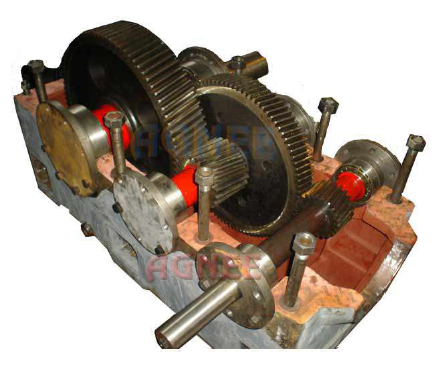Related Resources: gears
Design and Analysis of Two Stage Reduction Gearbox
Design and Analysis of Two Stage Reduction Gearbox
V.Pranay Deepak Reddy
Talasila Pranay Nag
Department of Mechanical Engineering
VNR Vignana Jyothi Institute of Engineering Technology
Open Design and Analysis of Two Stage Reduction Gearbox
Free Membership Required
Abstract:
An All-Terrain Vehicle is an Off Road vehicle that has the ability to drive on any terrain without any difficulty. These vehicles are designed to sustain any sort of extreme loads that act during off road driving. All-Terrain Vehicles are fitted with large tires with grooves for better traction on slippery terrains, high ground clearance to avoid obstacles, and usually designed with high torque rather than speed. As compared to commercial vehicles, these vehicles are designed to be more strong and durable. These vehicles are vastly used in Deserts, Mountains, forests or any other gravel surfaces.
 |
|---|
All-Terrain Vehicles are vastly used in farming in India. Best examples are tractors and snow mobiles. The main key for such vehicles is the powertrain assembly which is unique and differs from other vehicles. The power train includes Engine, Manual Gearbox, Limited slip Differential or in some cases a reduction gearbox coupled with a continuously Variable Transmission (CVT).CVT is the new technology being implemented in Off Road Racing.
BAJA vehicles are the most famous Off Road Vehicles in India. However,due to the extreme loads caused by the gravel tracks and the constraints to reduce the weight, one major component is susceptible to failure—Reduction Gearbox. Gearbox is a costly component and on failure, the vehicle is immobile The Power Train assembly is so complicated that it occupies a lot of space in the vehicle hence increasing the overall weight. The aim of this project is to design a gearbox that is compact, lightweight and has extended life. Major fields covered are Material selection, Machine Engineering Design of Gears, Shafts, Gearbox Casing, Bearing selection, Vibrations caused due to the Engine. These analytical designs have been validated through the help of CAD and FEA software like SolidWorks and ANSYS. Various Analysis like Structural, Repeated loads and Computational Fluid Dynamics (CFD) have been performed to study the behavior of components and oil flow during operations. The design is also finalized with the fits required for assembly and the final product is expected to be efficient, light weight, compact and long lasting than the other Gearboxes being used today.
TOC
1.INTRODUCTION 1
1.1 GEARBOX 1
1.2 REDUCTION GEARBOX 2
1.2.1 Types of Reduction Gearbox 2
1.3 COMPONENTS OF GEARBOX 3
1.3.1 Casing 3
1.3.2 Gears 4
1.3.3 Shafts 6
1.3.4 Bearings 6
1.4 FITS AND TOLERANCES 7
1.4.1 Types Of Fits 8
1.5 ALL TERRAIN VEHICLE 9
2. LITERATURE REVIEW 10
3. METHODOLOGY FOR MATERIAL SELECTION 12
3.1 OBJECTIVES 12
3.1.1 DESIGN CONSIDERATIONS 12
3.2 REQUIRED SPECIFICATIONS 13
3.3 MATERIAL SELECTION 14
3.3.1 Material For Gears 14
3.3.2 Material For Shafts 15
3.3.3 Material For Casing 16
3.3.4 Aluminum Alloy Grade 7071-T6 16
3.4 GEAR OIL SELECTION 17
3.5 SELECTION OF FITS AND TOLERANCES 18
4. DESIGN OF COMPONENTS OF TWO STAGE
REDUCTION GEARBOX
21
4.1 DESIGNING OF GEARS 21
4.1.1 Gear Profile Parameters 21
4.2 DESIGN OF FIRST STAGE REDUCTION 21
4.3 DESIGN OF SECOND STAGE REDUCTION 27
4.4 CONSIDERATIONS & SELECTIONS OF BEARINGS 32
5. MODELLING OF TWO SATGE REDUCTION
GEARBOX IN SOLIDWORKS
34
5.1 INTRODUCTION TO SOLIDWORKS: 34
5.2 MODELLING OF THE COMPONENTS 35
5.2.1 Procedure For Modeling The Gears 36
5.2.2 Procedure For Modeling The Shafts 39
5.2.3 Modeling the Gearbox Casing 42
5.3 ASSEMBLY OF THE PRODUCT 44
6. ANALYSIS AND RESULTS 46
6.1 FORCES ACTING ON GEARS 46
6.2 FORCES ACTING ON THE SHAFTS 51
6.3 VIBRATION AND LOADING EFFECT ON CASING 54
6.4 FLOW ANALYSIS USING FLOW SIMULATION 57